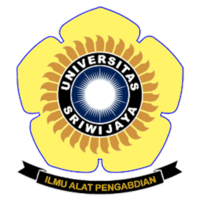Sistem Pengolahan Limbah Cair di Rumah Sakit X Sumatera Selatan
Abstract
Yuwati S. 2021. Liquid waste treatment system at X hospital in South of Sumatera. In: Herlinda S et.al. (Eds), Prosiding Seminar Nasional Lahan Suboptimal ke-9 Tahun 2021, Palembang 20 oktober 2021. pp. 384-391. Palembang: Penerbit & Percetakan Universitas Sriwijaya (UNSRI).
Liquid waste generated by hospital activities is a problem that must be faced by the hospital because the waste produced is infectious and toxic containing microorganisms, toxic chemicals, and radioactivity. If it is not carried out through a good management process, it will increase the risk of disease transmission, so that it can cause pollution to the surrounding environment and interfere with health. This study aimed to find out the characteristics of the liquid waste generated, and to examine the liquid waste management system carried out at the X Hospital in South of Sumatera. The research methodology used field surveys, literature studies, interviews and test analysis of the characteristics of liquid waste in the laboratory. The waste of the X Hospital in South of Sumatera comes from the activities of hospitals, outpatients, inpatients, emergency rooms, laboratories, laundry, nutrition, operating rooms, and offices. The liquid waste was processed through several stages, namely equalization tank, aeration tank, sedimentation tank, bioindicator tank, UV pool, and finally it was channeled at the outlet. The results of the water analysis showed that the parameters of temperature, PH, BOD, COD, TSS, and NH3, have met the Quality Standards of Hospital Liquid Waste that have been stipulated by the government. The process of managing liquid waste at the X Hospital in South of Sumatera has been carried out properly and in accordance with the Decree of the Minister of Health of the Republic of Indonesia Number: 1204/MENKES/SK/X/2004, namely the hospital has carried out its own wastewater treatment using a Wastewater Treatment Plant. It is suggested that the WWTP facilities and infrastructure be always properly maintained to avoid occupational diseases caused by occupational illness.
Keywords
Full Text:
PDFArticle Metrics
Abstract view : 1174 timesPDF - 2031 times
Refbacks
- There are currently no refbacks.

